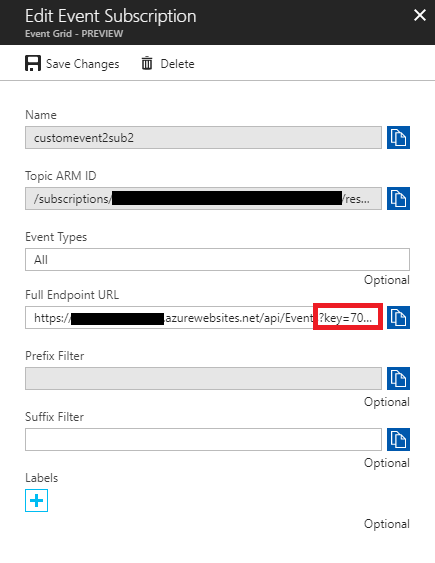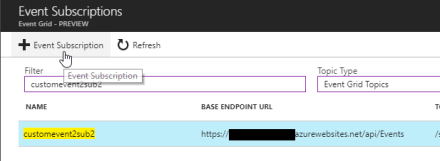As I wrote before, I’m playing around with the new Azure Event Grid lately. As I mentioned in my previous post, custom event publishers and subscribers hold a lot of promise, especially while we are still awaiting the bulk of Azure services to be hooked up to Event Grid.

But for custom publishers and subscribers to actually lift off, we need some way to authorize calls, both those from the publisher to Event Grid and those from Event Grid to the subscriber endpoint. Now the first is pretty well covered in the docs. But the call from Event Grid to the subscriber endpoint is not very well described at this point in time. It just mentions some initial validation sequence, which is supposed to prove ownership of the endpoint but in actuality just verifies that the endpoint is expecting to handle Event Grid events.
If this were the whole story, having an Event Grid subscriber endpoint would imply accepting unauthorized calls containing event payloads, meaning anyone with knowledge of the endpoint address can send bogus events your way – and since you have no way to tell authentic from fake events, you’d also be opened up for Denial of Service.

Luckily, a conversation with the Product Team quickly revealed that this is not the whole story. When you register a subscriber endpoint in Azure Event Grid, you can include a query string. This query string will be included in each and every call to your endpoint, so both the initial validation call and subsequent event notification calls. If you put some sort of key in there and then verify its presence in each incoming call, you’ve effectively locked out the Man In The Middle, and you just made a Denial of Service a lot harder.

Furthermore, query strings that are added this way are not visible when enumerating Event Grid Subscribers in the portal, as an added layer of security.

I’ve updated my code samples to include a possible way to handle this for a ASP.NET Core WebAPI webhook.
Thanks to Dan Rosanova for clearing up how authorizing Event Grid calls to custom webhooks can be done.
